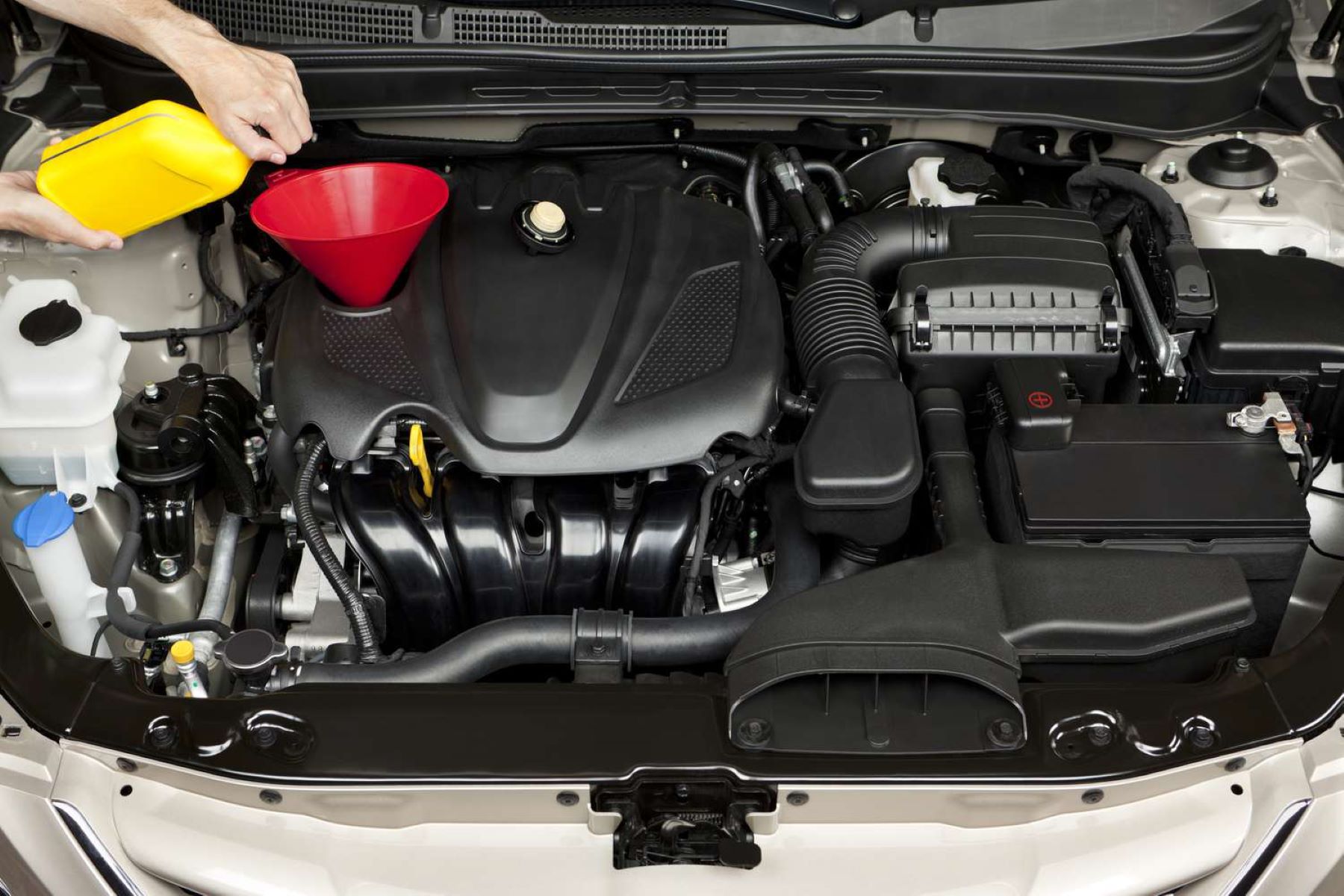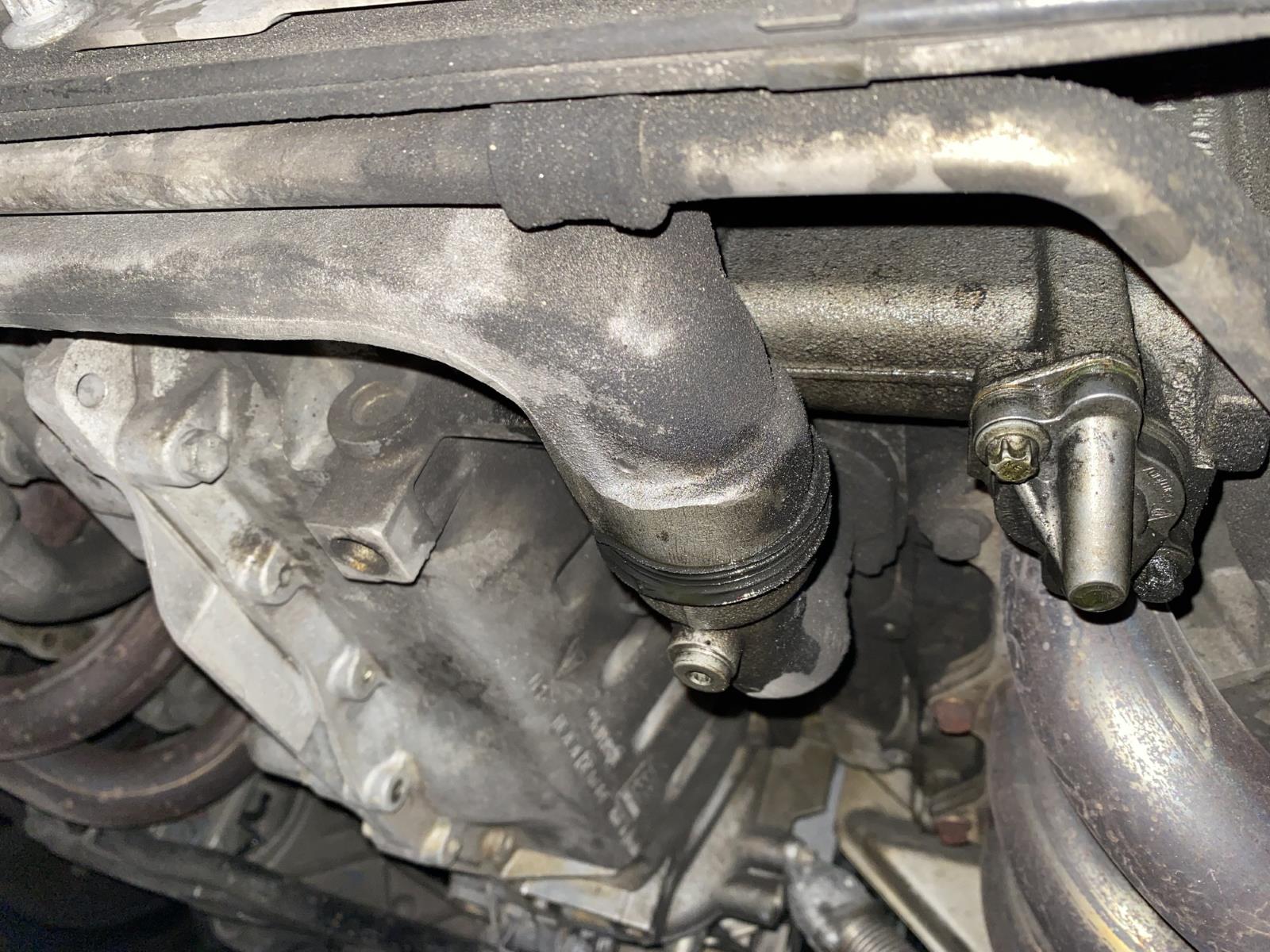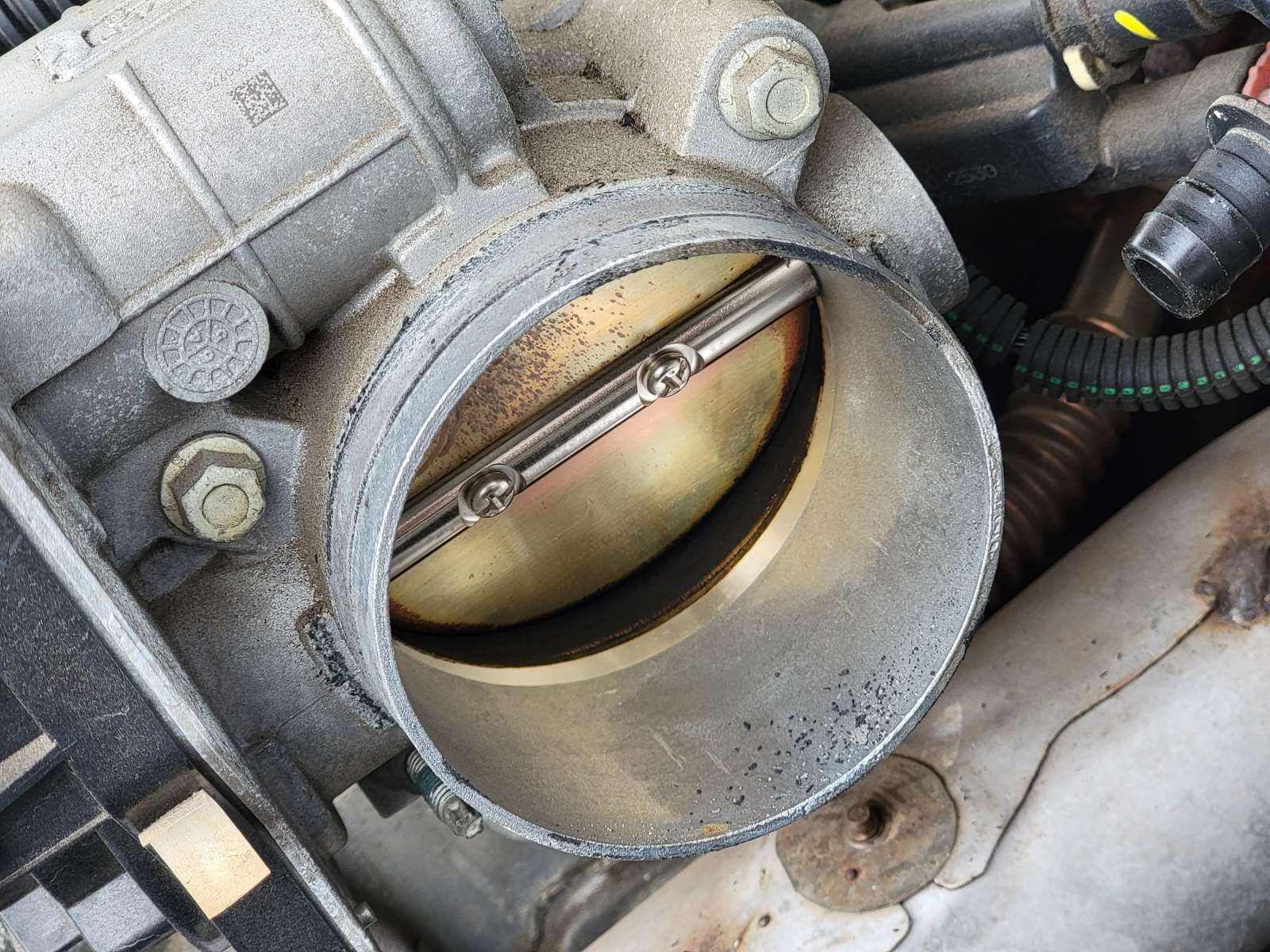Home>Automotive>The Surprising Reason Your Car’s AC Blows Cold Only When You Hit The Gas!


Automotive
The Surprising Reason Your Car’s AC Blows Cold Only When You Hit The Gas!
Published: January 22, 2024
Discover the surprising reason why your car's AC blows cold only when you hit the gas! Get expert automotive insights and solutions now.
(Many of the links in this article redirect to a specific reviewed product. Your purchase of these products through affiliate links helps to generate commission for Regretless.com, at no extra cost. Learn more)
Table of Contents
Introduction
Have you ever noticed that your car's air conditioning (AC) seems to blow colder air when you step on the gas pedal? It's a common experience that can leave many drivers puzzled. After all, shouldn't the AC system work consistently regardless of your speed or driving habits? The surprising truth is that the behavior of your car's AC system is intricately tied to the operation of the engine, specifically the speed at which it runs.
Understanding this phenomenon requires a closer look at the inner workings of the AC system and its relationship with the engine. While it may initially seem perplexing, the connection between your car's AC performance and engine speed is a fascinating aspect of automotive engineering. As we delve into the intricacies of these systems, you'll gain a deeper appreciation for the synergy between the engine and the AC compressor, shedding light on the surprising reason behind the fluctuating cold air output. Let's embark on a journey to unravel the mystery of why your car's AC seems to have a mind of its own when it comes to cooling your cabin.
Read more: You Won’t Believe What Happens When You Drive Your Car With Only 5% Engine Oil Life Left!
Understanding the AC System
The air conditioning (AC) system in your car is a complex network of components designed to regulate the temperature and humidity inside the vehicle cabin. At its core, the AC system consists of a compressor, condenser, evaporator, and expansion valve, all working in tandem to facilitate the transfer of heat from the interior of the car to the exterior environment. The process begins with the compressor, which plays a pivotal role in pressurizing the refrigerant, initiating the cooling cycle.
The refrigerant, typically a substance like R-134a, circulates through the AC system, transitioning between gaseous and liquid states to absorb and release heat. As the refrigerant flows through the system, it undergoes a series of transformations that facilitate the transfer of thermal energy, resulting in the generation of cold air inside the cabin. This intricate process relies on the principles of thermodynamics and heat transfer, harnessing the properties of the refrigerant to achieve the desired cooling effect.
Moreover, the condenser and evaporator are integral components that facilitate the heat exchange necessary for cooling the air. The condenser works to dissipate heat from the refrigerant, converting it from a high-pressure gas to a high-pressure liquid. On the other hand, the evaporator absorbs heat from the cabin air, causing the refrigerant to evaporate and produce a cooling effect. These components work in unison, leveraging the thermodynamic properties of the refrigerant to regulate the temperature inside the car.
Understanding the AC system involves recognizing the intricate interplay of these components and their collective role in maintaining a comfortable climate within the vehicle. As we delve deeper into the inner workings of the AC system, we gain valuable insight into the mechanisms that govern its functionality. This foundational understanding sets the stage for unraveling the surprising connection between the AC system and the engine speed, shedding light on the intriguing dynamics that influence the cooling performance of your car's AC.
The Role of the Compressor
At the heart of the air conditioning (AC) system lies the compressor, a vital component responsible for initiating the cooling process. The compressor serves as the powerhouse of the AC system, playing a pivotal role in pressurizing the refrigerant to kickstart the entire cooling cycle. As the engine runs, it drives the compressor via a belt or clutch mechanism, enabling the compressor to engage and begin its crucial function.
When the refrigerant, typically R-134a, enters the compressor, it is in a low-pressure gaseous state. The compressor's primary task is to compress this refrigerant, significantly increasing its pressure and temperature. By subjecting the refrigerant to high pressure, the compressor sets the stage for the subsequent heat exchange processes that lead to the generation of cold air within the vehicle cabin.
As the refrigerant exits the compressor, it transforms into a high-pressure, high-temperature gas, primed to undergo the next phases of the cooling cycle. This compressed refrigerant then flows through the AC system, where it undergoes a series of state changes, facilitating the absorption and release of heat to achieve the desired cooling effect.
The compressor's ability to pressurize the refrigerant is fundamental to the overall functionality of the AC system. It serves as the starting point for the thermodynamic processes that enable the transfer of heat, allowing the refrigerant to carry out its role in regulating the cabin temperature. Without the compressor's action, the refrigerant would not undergo the necessary transformations to facilitate effective heat exchange, ultimately hindering the system's ability to produce cold air.
Furthermore, the compressor operates in harmony with the engine speed, as it is typically driven by the engine through a belt or clutch arrangement. This interdependence between the compressor and engine speed forms the basis for the intriguing relationship between the AC system and the vehicle's propulsion system, a connection that influences the cooling performance under varying driving conditions.
Understanding the pivotal role of the compressor provides valuable insight into the intricate workings of the AC system. This foundational knowledge sets the stage for comprehending the surprising impact of engine speed on the AC's cooling output, revealing the fascinating dynamics that govern the behavior of your car's air conditioning system.
The Impact of Engine Speed
The engine speed of a vehicle, commonly referred to as RPM (revolutions per minute), plays a pivotal role in influencing the performance of the air conditioning (AC) system. As the engine operates, it directly affects the rotational speed of the AC compressor, which, in turn, influences the efficiency of the entire cooling process. The relationship between engine speed and AC performance is a compelling aspect of automotive engineering, shedding light on the interconnected nature of these critical systems.
When the engine runs at lower RPM, such as during idling or low-speed driving, the rotational speed of the AC compressor decreases accordingly. This reduction in compressor speed can lead to a lower rate of refrigerant circulation and compression, impacting the overall cooling capacity of the AC system. As a result, the generation of cold air within the vehicle cabin may be less efficient during these operating conditions, potentially leading to a perceived decrease in cooling effectiveness.
Conversely, when the engine operates at higher RPM, such as when accelerating or driving at highway speeds, the rotational speed of the AC compressor increases. This elevated compressor speed enhances the rate of refrigerant circulation and compression, bolstering the system's ability to generate cold air more effectively. Consequently, drivers may notice a more pronounced cooling effect during these driving scenarios, with the AC system exhibiting greater efficiency in cooling the cabin.
The fluctuating impact of engine speed on AC performance underscores the dynamic nature of the relationship between these systems. It highlights the nuanced interplay between the engine's rotational behavior and the operational dynamics of the AC compressor, ultimately influencing the cooling output experienced by the vehicle occupants.
Moreover, the dependence of AC performance on engine speed underscores the need for a balanced understanding of driving conditions and their implications for interior comfort. Whether navigating through congested urban streets or cruising along open highways, drivers can observe the varying behavior of their car's AC system in response to the engine's RPM, gaining a deeper appreciation for the intricate mechanisms at play.
By recognizing the profound influence of engine speed on AC performance, drivers can develop a heightened awareness of the interwoven nature of these automotive systems, fostering a greater understanding of the factors that shape their overall driving experience. This realization underscores the significance of engine speed as a determining factor in the functionality of the AC system, offering valuable insights into the captivating synergy between the vehicle's propulsion and climate control systems.
The Solution: Revving the Engine
In situations where the air conditioning (AC) system exhibits reduced cooling effectiveness at lower engine speeds, drivers may naturally seek a solution to address this discrepancy. One common approach involves revving the engine, a strategic maneuver aimed at increasing the rotational speed of the AC compressor to enhance the system's cooling performance. By deliberately elevating the engine's RPM, drivers can actively influence the behavior of the AC system, potentially mitigating the perceived reduction in cooling capacity experienced during idling or low-speed driving.
When the engine operates at a higher RPM, the AC compressor spins at an accelerated rate, leading to a corresponding increase in the circulation and compression of the refrigerant within the AC system. This heightened compressor speed can bolster the system's ability to generate cold air more effectively, offsetting the potential decline in cooling efficiency experienced at lower engine speeds. As a result, revving the engine presents a practical and accessible method for optimizing the AC system's performance, particularly in scenarios where the cooling output may be compromised due to reduced compressor speed.
By proactively revving the engine, drivers can actively influence the cooling capacity of the AC system, potentially restoring the desired level of comfort within the vehicle cabin. This proactive approach empowers drivers to adapt to varying driving conditions and environmental factors, ensuring that the AC system can deliver consistent and reliable cooling performance across a spectrum of operational scenarios.
Moreover, the strategic use of engine revving underscores the dynamic nature of the relationship between engine speed and AC performance, highlighting the driver's ability to directly impact the functionality of the climate control system. This proactive engagement with the vehicle's propulsion and climate control systems reflects a nuanced understanding of automotive dynamics, allowing drivers to optimize their driving experience by leveraging the interconnected nature of these critical components.
In essence, revving the engine serves as a practical solution for enhancing the cooling effectiveness of the AC system, offering drivers a means to actively influence the system's performance in real-time. This adaptive approach aligns with the intricate interplay between engine speed and AC functionality, showcasing the driver's capacity to shape the climate control experience through deliberate and informed actions.
Through the strategic utilization of engine revving, drivers can harness the potential of their vehicle's propulsion system to optimize the cooling output of the AC system, fostering a greater sense of control and adaptability in managing interior comfort during their journeys. This proactive engagement underscores the resourcefulness and ingenuity of drivers in navigating the dynamic interplay between engine behavior and climate control, ultimately enhancing the overall driving experience.
Conclusion
In conclusion, the surprising connection between your car's air conditioning (AC) performance and engine speed unveils a captivating interplay between critical automotive systems. The intricate relationship between the rotational behavior of the AC compressor and the engine's RPM underscores the dynamic nature of AC functionality, offering drivers valuable insights into the factors that shape their driving experience.
By understanding the pivotal role of the compressor in initiating the cooling process and the impact of engine speed on AC performance, drivers gain a deeper appreciation for the interconnected mechanisms at play. The fluctuating cooling output observed at varying engine speeds highlights the nuanced dynamics of the AC system, prompting drivers to adapt and optimize their driving experience through strategic actions such as revving the engine.
Furthermore, the strategic use of engine revving as a practical solution to enhance the cooling effectiveness of the AC system underscores the driver's capacity to actively influence the functionality of the climate control system. This proactive engagement with the vehicle's propulsion and climate control systems reflects a nuanced understanding of automotive dynamics, allowing drivers to optimize their driving experience by leveraging the interconnected nature of these critical components.
Ultimately, the surprising reason behind your car's AC blowing colder air when you hit the gas unveils the captivating synergy between the engine and the AC system, offering drivers a deeper understanding of the factors that shape their interior comfort. By recognizing the profound influence of engine speed on AC performance, drivers can develop a heightened awareness of the interwoven nature of these automotive systems, fostering a greater understanding of the factors that shape their overall driving experience.
As drivers navigate through a spectrum of driving conditions, this realization empowers them to adapt to varying scenarios, ensuring that the AC system can deliver consistent and reliable cooling performance. The proactive engagement with the vehicle's propulsion and climate control systems reflects the resourcefulness and ingenuity of drivers in managing interior comfort during their journeys, ultimately enhancing the overall driving experience.
In essence, the surprising reason behind your car's AC blowing colder air when you hit the gas offers a compelling glimpse into the captivating dynamics of automotive engineering, unveiling the driver's ability to shape and optimize their driving experience through a nuanced understanding of the interconnected systems at play.














